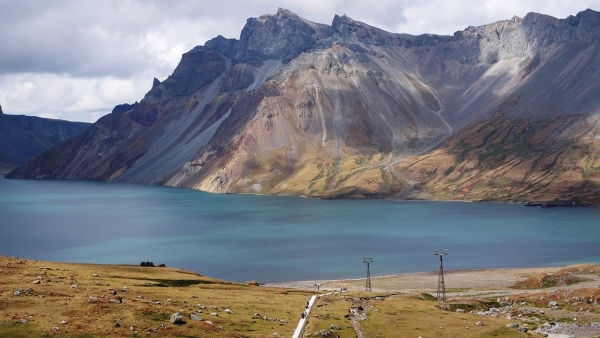North Korea’s sacred mountain has a soft heart

North Koreans have a soft spot for Mount Paektu, a volcano with a violent past that’s revered as the birthplace of the Korean nation. It turns out that Paektu has a soft spot, too: globs of melted crust at its heart that may comprise a complex magma reservoir. It’s unclear how the now-picturesque caldera (above) became such a titan, because it lies hundreds of kilometers west of the so-called Ring of Fire, where many of the world’s monster volcanoes are forged from the collision of tectonic plates. The findings, published in today’s issue of Science Advances, suggest that Paektu remains a force to be reckoned with. Straddling the China–North Korea border, the volcano unleashed one of the biggest modern eruptions on our planet in 946 C.E. The findings could also explain swarms of tiny earthquakes recorded at the volcano between 2002 and 2005, presumably caused by magma rising toward the surface. (The volcano is quiet today.) The project has been hailed as a landmark achievement in science diplomacy. In a collaboration organized by AAAS (publisher of Science), U.K. scientists, working with colleagues at North Korea’s Earthquake Administration and other organizations, in 2013 stationed six broadband seismometers in an array extending east from Paektu. Over 2 years, they recorded seismic waves from distant earthquakes rippling through the crust beneath the volcano. Alterations in wave energy and form revealed softer—presumably melted—rock. The project was the first time Western geophysical equipment was deployed on North Korean soil, and it resulted in one of the few papers ever published in a Western journal with a North Korean lead author.

Facebook comments